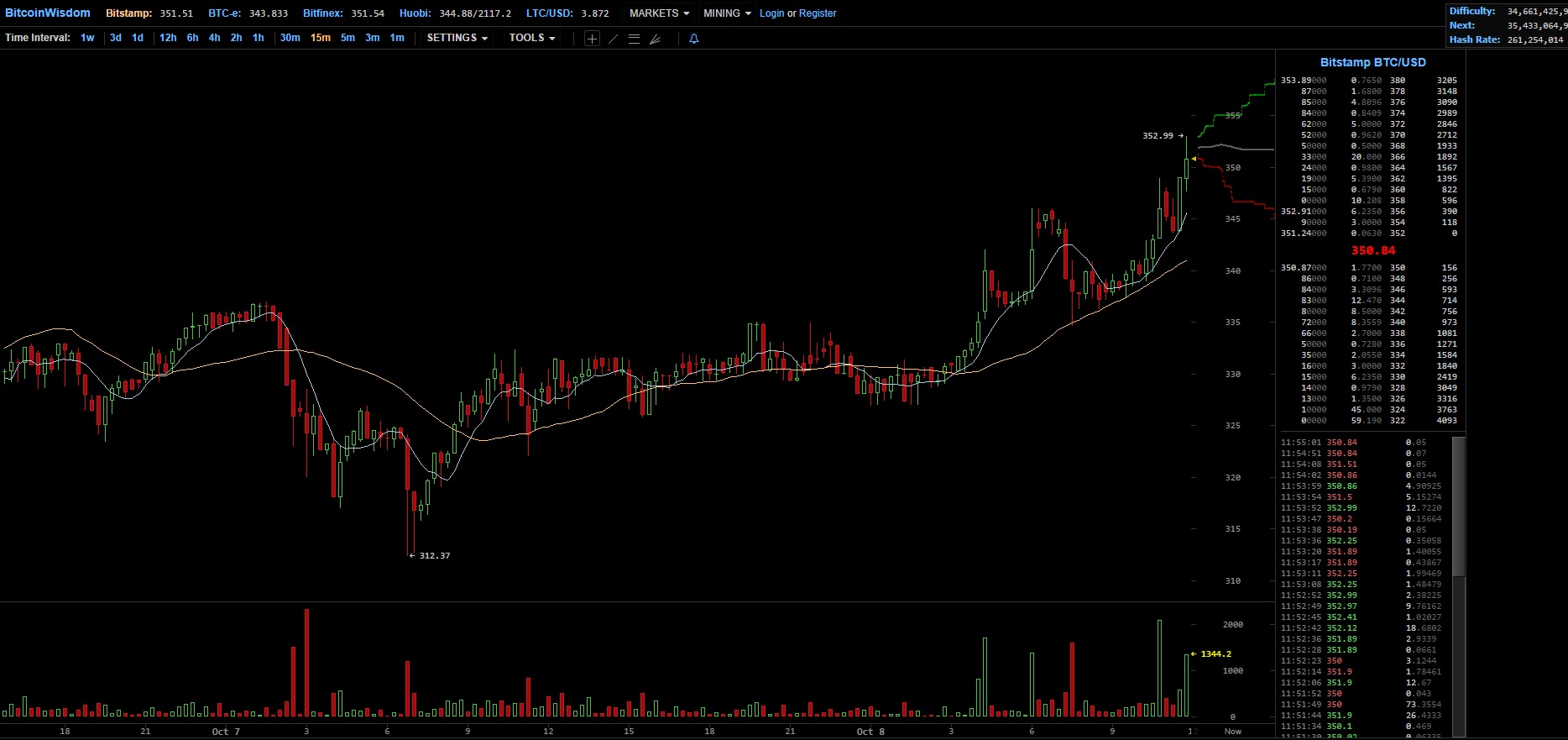
September 23, following a series of encouraging news (culminating with the integration of bitcoin by Paypal), the enthusiasm was palpable on the forums, publications and various social media. Since this famous Klondike rush bitcoins for November and December 2013, the dynamic universe of crypto-currencies had very harsh setback. The recent good news left nevertheless presage better times, but yet the value of the bitcoin markets began to descend, undergoing a mini-crash in bonus during the weekend of October 4-5.

The speculation surrounding this event - or series of events - is well underway: manipulation of markets, investors for a long time leaving the ship, fear of repressive policies US or Russian, spontaneous panic, and so on. Why this loss of 27% on the markets, the bitcoin ranging from $ 375 to $ 275 in a few hours? There is currently no definite answer, but it would seem that there have been a massive sale of bitcoins from a single person or a single group, causing a panic in the markets. An estimated 30,000 bitcoins the size of this sale, which is huge for an even if marginal market.
During the crash, some of the most pessimistic predicted the death of the bitcoin, others were preparing their logs to fill pockets $ 100 unit, while some media pointed the finger the fragility of these famous virtual currencies. However only the bitcoin was trading around $ 275, a wall of sale (a "sell wall" is a very large offer of sale at a price X) settled on http://bitstamp.com/ at $ 300. We are talking here of about 27,000 bitcoins put up for sale at $ 300 the unit!
This is where it gets interesting.
Instead of accelerating panic, this monstrous "sell wall" was one as an alarm for many, a kind of signal: "you have to hurry to enjoy"! So the wall was attacked immediately, hairdos gently as and as buyers kicked on, the market refusing somehow go down more than the $ 300 requested by the seller (s). A few hours later, the 'wall' had completely devoured. over 8 million of bitcoins dollars had changed hands.
What conclusion drawn? Some see the fragility of the new currency, while a sale of 0.23% of the total number of bitcoins causes a momentary drop of 27% of its value. Others, such as the author of these lines, saw an opportunity to buy bitcoins for discount, but especially a decentralization exercise which, in the end, will help the network. Indeed, this episode can be seen as a redistribution, the 30,000 bitcoins passing from one owner to hundreds of owners. The bitcoin is a decentralized currency - in the sense that it is under control of any authority, but like any other currency, those who possess the heavier portfolios remain able to influence markets. In this sense, the sale Flash of 30,000 bitcoins to hundreds of new owners is a good thing, especially when we see that the market was able to absorb this sale without damage.
Currently, a few days later, the bitcoin back gently slope, dealing an average of nearly $ 340. We are still far from the peaks reached in December 2013, but infrastructure grow at a crazy pace, each new event demonstrating the resilience of this new technology.







